Text by Ana Moriyón & Pablo Durán
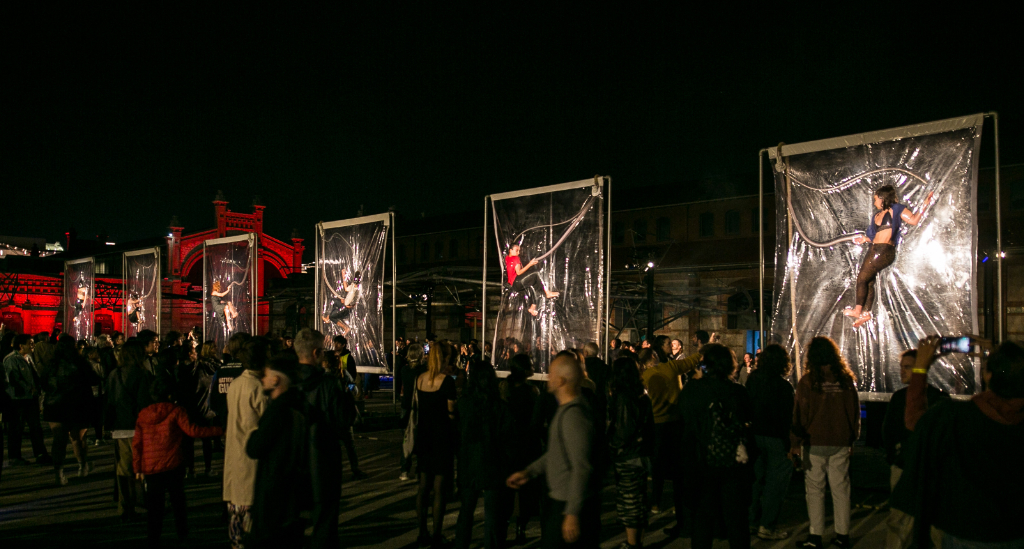
We find ourselves at a historic crossroads in which AI is becoming ubiquitous. Creations lack a discernible origin, inherent responsibility, or a definite bias, like a primordial concoction open to transformation without challenging established knowledge systems and hierarchies.
In this radical restructuring of entire industries, festivals like L.E.V. Matadero become an interpretation of the future and its possibilities, digitally assembled through renderings of the current moment and its events. The 5th edition of the festival unfolded as an infinite hysteria of interpretations within electronic sound creation, audiovisual creation, digital craftsmanship, and extended realities.
Throughout four densely scheduled days, the festival took over various spaces in Matadero, Madrid (Spain). We noticed a muted approach from previous editions, perhaps due to a change in scenery to smaller halls or perhaps because of Lawrence Malstaff’s wildly acclaimed and quietly disturbing floating vacuum-packed human bodies as center stage throughout the festival.
On Thursday, as the first act, Rocío Guzmán‘s intimate tone presented a blend of the most Andalusian folklore, urban and carefree lyrics, with deep analog and synthetic basses that fought for attention, often stolen by the singer and her piano. After that, Ukranian artist Kataryna Gryvul introduced a heavily chaotic and guttural environment by combining highly elastic and fluid sound design with overwhelmed voices of cathartic liberation, skirting an impossible boundary between ASMR and screamo. She was accompanied visually by Alex Guevara, who, aside from once again demonstrating his mastery of TouchDesigner, served as the perfect visual companion, agitated particles drowning us in nocturnal waves or an infinite universe. NSDOS closed the day with a hybrid performance fused with techno rhythms, with attendees dancing like they hadn’t all day.
Friday started with COH & Amul Mogard, an intimate drone show with a quadraphonic sound that served as a prelude to the modular synthesiser-based performances that the rest of the festival had in store for us. Changing venues to La Casa del Lector, much more suited for audiovisual engagement, Ricardo Giovinetto masterfully plunged us into an evolving stream of Rennaisance proportions and principles through the feminine figure and echoes of vocal polyphonies. A new gaze was presented that of an AI into the concept of grace and the possibility of its newfound form.
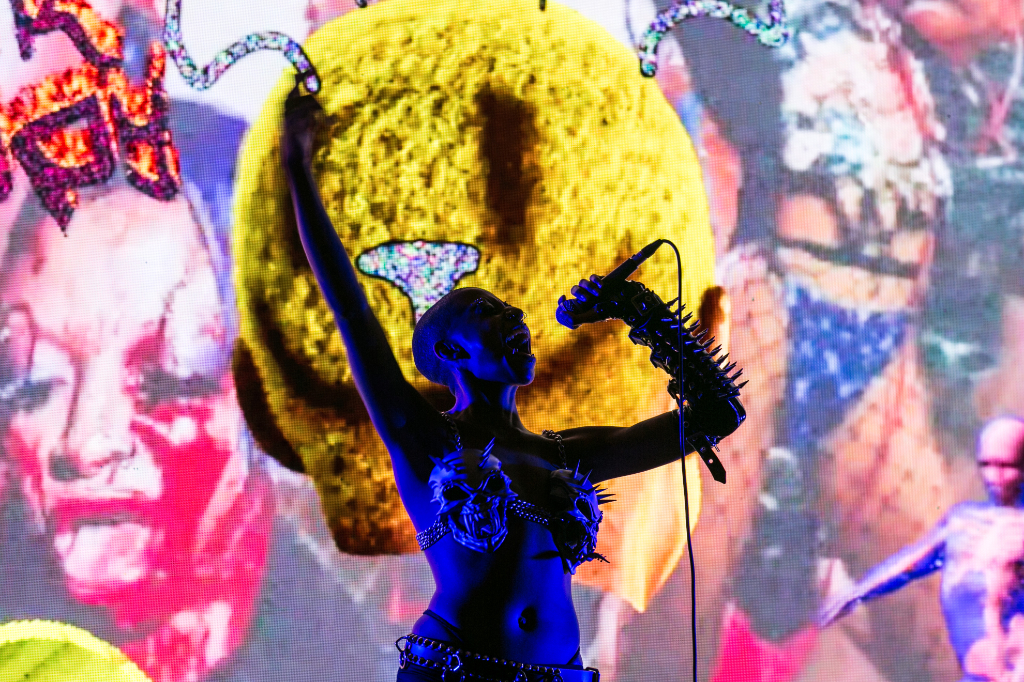
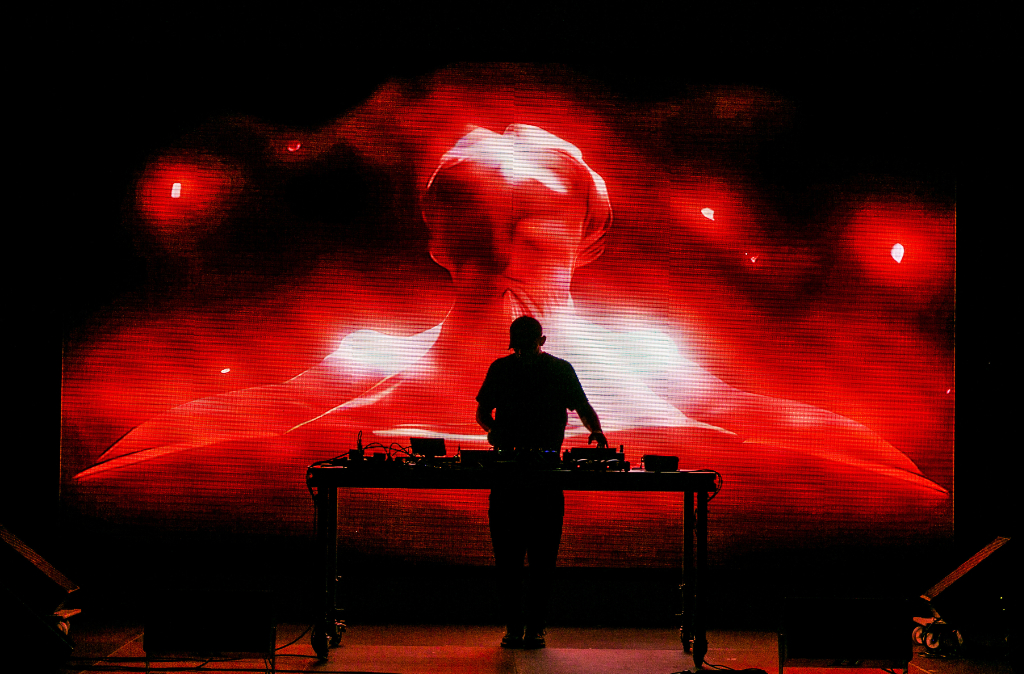
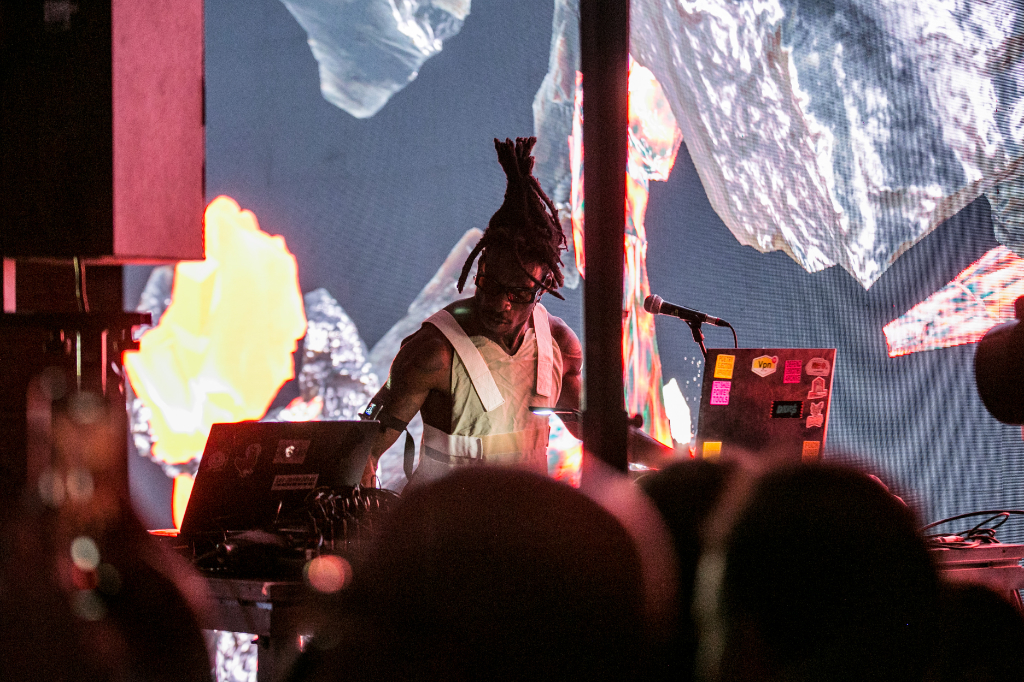
Worthy of mention as well as Joakim with his project Second Nature. Sitting amongst a hypnotised audience, he presented a journey of juxtapositions: the landscape and soundscapes of the industrial structures of the developed world with the most basic forms of nature. A bombardment of moods, scales, and samples that successfully attempts to blur the lines between the natural and the artificial through an archive of archives.
The night closed with the insatiable duo formed by Beatrix Weapons and Ruido.Frio. The music pounded through the walls of the Central de Diseño, revealing an artist who has long abandoned any past sonic forms to embrace the uncertain audiovisual future, a great promise of the national avant-garde electronic scene. Melancholic melodies and agitated bpm created a post-harmonic sound accompanied by the monumental craftsmanship of Ruido.Frio. A meticulously crafted virtual world in which the absence of automation or pre-rendered elements served as a clear statement of intent and a strong embrace of conscious and controlled creation, in contrast to AI’s technical liberation. A glimpse into a possible future of digital craftsmanship, sound, and storytelling.
Saturday offered visceral and intense performances. With Lorem Tersch, we floated between dreams and reality reinterpreted through machine learning systems. A continuous parade of mutation and transformation across divided chapters accompanied by algorithmic and synthetic sounds that intertwined each one. Concluding the festival on a cathartic note, LustSickPuppy enraptured the crowd, bearing evident roots in punk and hardcore rather than electronic music. The performance was marked by an unhinged stage presence of everything leather and studs, delivering high energy and high-caliber mayhem that provided an electrifying conclusion to the series of performances.
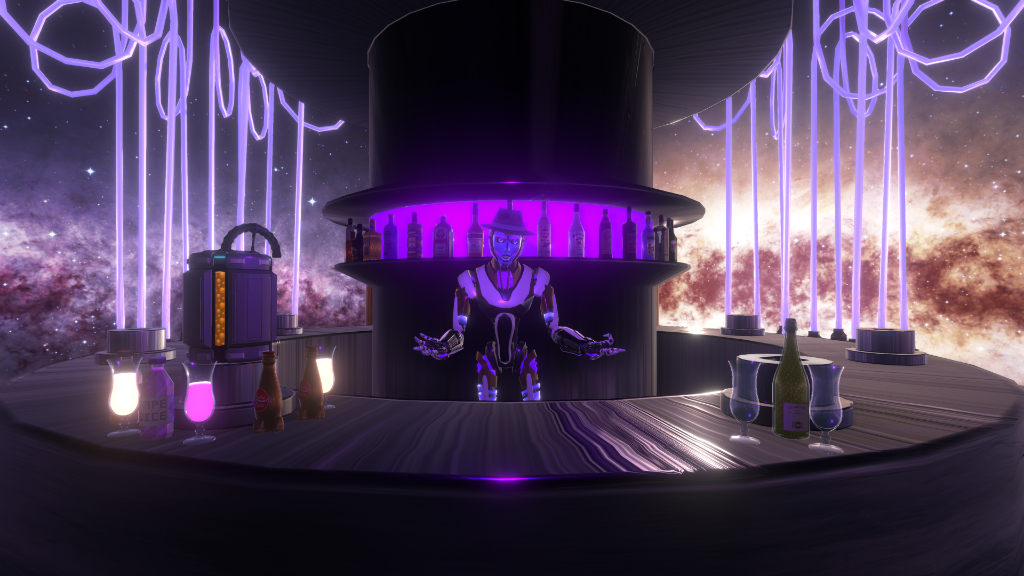
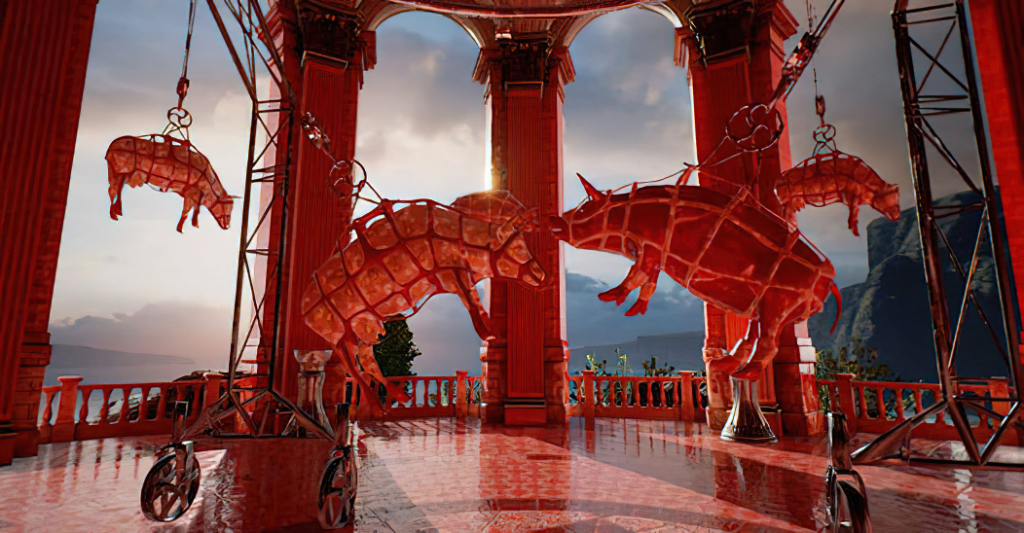
Once again, VORTEX was one of the central claims at LEV Matadero, where attendees plunged into extended realities, (un)materialised into seven immersive experiences. The event took place in Nave 0 of Matadero, one of its most haunting and industrial settings, which, combined with the limited number of people allowed inside, made the whole experience eery and silent, as if a virtual presence had taken over the human.
In a polarised edition of VORTEX, the medium was approached with a dense and critical perspective within disparate gradients of solemnity. From the whimsical and tense mixed reality video game Eggscape by Herman Heller & Jorge Tereso to Juan Le Parc‘s macabre and mechanical choreography of cannibal carnage, all experiences remind us that we are experiencing an anxious and critical moment in time.
Bridging analog drawing and animation techniques with a new formal expression, the immersive film From the Main Square by Brazilian artist Pedro Harres took us through a non-linear narrative of a crafted city in decline, both an unreal and a strikingly familiar narrative of societies that experience the maladies of political polarisation and environmental collapse. The comic-like virtual landscape of urban absurdities and the bustling urban soundscape convey these powerful reflections in this paused and self-guided 20-minute film.
All the works transported us to somewhat distressing and thought-provoking worlds, but it was Quantum Bar, the piece by Social VR Artist Christina “XAOSPRINCESS” Kinne, that most directly challenged the immediate present by presenting an immersive conversation with an empathetic avatar-barman. The piece exploits the possibilities of social and humanoid interactions with AI in an immersive, conversational, and human form. This trans-disciplinary approach seems like a beta version or a trailer of what is to come, unsettling, to say the least, and raising questions related to the ethics of it all. The choice of a bar setting hints that we are still striving to satisfy our physicality.
On the other side of the AI spectrum, and as the central piece of VORTEX and the only one outside the VR realm, was the beautiful experimental film Hysteresis by Robert Seidel. The artist explores AI as a cinematographic process of representations through analog drawings, projections, and choreography to create infinite feedback loops and transformations. The mediation of these images by machine learning unveiled a frenetic, baroque, and, at the same time, delicate visual language that resonates with the mentioned hysteria related to the adoption of AI in this historical moment.
This navigation between sound, the virtual, the physical, and their relationships through disparate mediums and contemporary sensibilities leaves us wanting to reflect that we are on the verge of transforming all conceptions of the creative process. Will future creations depend on machines’ re-configuration of fragments from the past? Or, on the other hand, will a more digitally crafted approach represent the avant-garde? The rhizomatic interpretations may continue to branch out. Time will tell, but in the meantime, we can trust L.E.V. Matadero and their carefully curated line-up to help us navigate the general uncertainty of what is to come.





